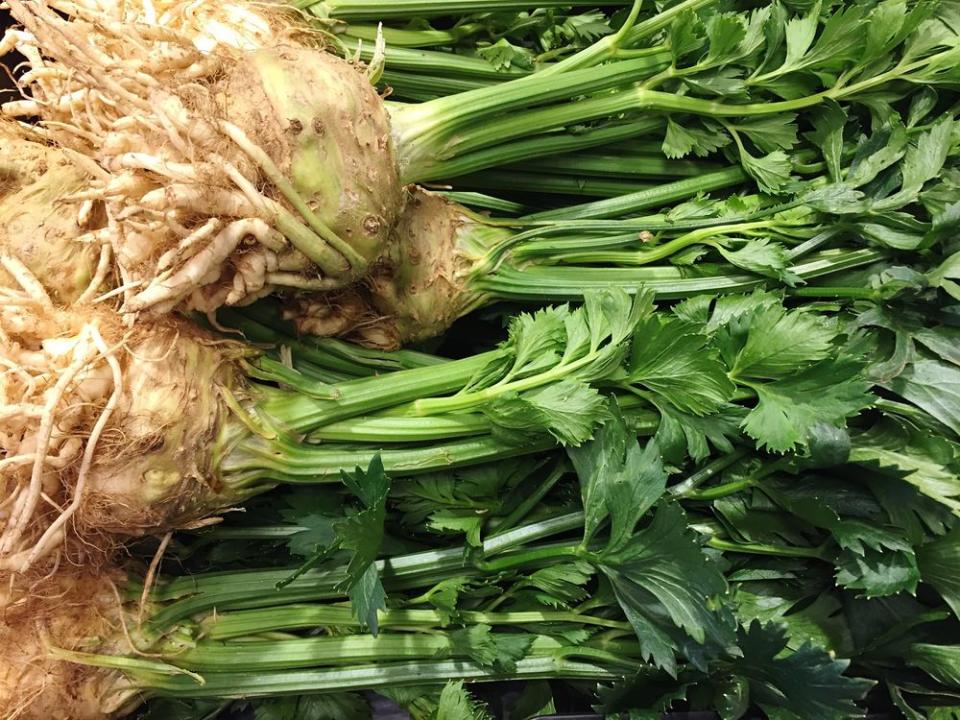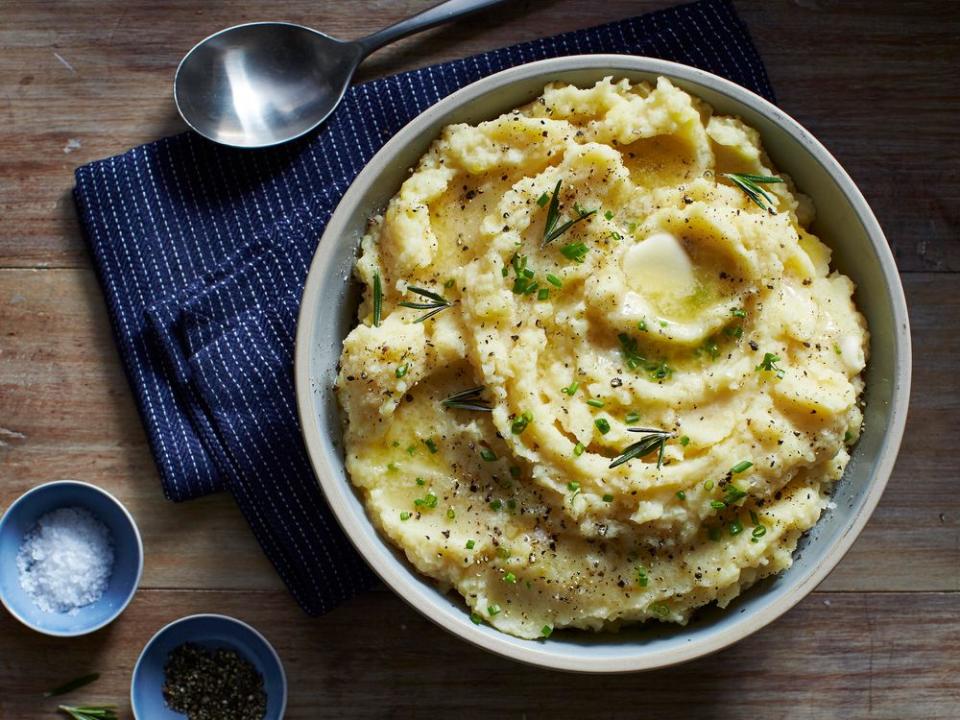Celeriac: What Is It and What Does It Taste Like?

Celeriac, or celery root, might not be the prettiest food—but it is a workhorse in the kitchen. Here’s what you need to know about the vegetable:
What Is Celeriac?
Celeriac is celery root, the bottom part of the crunchy green vegetable you already know. Nothing more, nothing less.
It’s simply a different part of the celery plant (Apium graveolens)—celeriac is the root, while celery is the stem.
While you may not be familiar with the funny-looking vegetable, it has a rich history and is firmly rooted (pun intended) in European cuisine.
Celeriac is believed to be referenced in Homer’s Odyssey way back in 800 B.C.E., though it was called “selinon.” Its popularity grew through the centuries and, by the Middle Ages, it was being cultivated throughout Europe.
Julia Child’s Celery Root Remoulade might be the most famous use of celeriac. Of the veggie that inspired the famous French dish, she wrote, “Underneath the brown, wrinkled exterior of celery root there is white flesh with a bright celery flavor and crisp texture that, when finely shredded, makes a delicious slaw like salad.”
Celeriac isn’t going to win any beauty contests any time soon. It’s bulbous, it’s hairy, and all-around unattractive. But what it lacks in looks, it makes up for in flavor and health benefits.
What Does It Taste Like?
WATCH: 3 Unusual Savory Fruits and Roots
Since celeriac is a root vegetable, it has a distinct earthy taste. Its flavor is similar to that of a turnip, but it also has a hint of celery-like freshness. Cooking the veggie brings out its sweetness.
Raw celeriac has a crunchy texture, but can easily be used for all sorts of smooth and creamy dishes when it’s cooked.
Celeriac Nutrition

Great news: Celeriac is absolutely packed with important vitamins and minerals. Loaded with fiber, antioxidants, phosphorous, potassium, and manganese, eating celery root can benefit your health in a variety of ways. For instance:
Since it’s rich in antioxidants, celeriac is an anti-inflammatory food. It may also help prevent heart disease, cancer, and Alzheimer’s.
Its high vitamin C content means it’ll give your immune system a boost.
One serving of celery root contains almost 10 percent of the recommended daily intake of potassium. Consuming an appropriate amount of potassium has been linked to lowered blood pressure and lower risk of stroke.
Celeriac is also a good source of fiber, which can help improve your digestion and may protect against colon cancer.
Where to Buy It

Celeriac may be available in stores year-round, but it’s in season in the fall and winter months.
You can often find it in regular supermarkets—it will usually be labeled “celery root” instead of “celeriac.”
However, you’re more likely to stumble upon it at farmers’ markets and specialty grocery stores. Often, celeriac is sold attached to celery stalks.
When you’re shopping, look for firm vegetables without any soft spots. You’d be hard-pressed to find a completely smooth celery root, but always go for the ones with the fewest number of blemishes.
How to Store It
When stored properly, celeriac lasts a long time. Keep it in a cool, dark place and wrapped in plastic. If at all possible, don’t peel the root to store it. The flesh will oxidize faster once the skin is removed.
If your celeriac came with celery attached, separate them as soon as you get home—they’ll both last longer.
Related: How to Store Celery So It Stays Crisp
Celeriac Substitutes
While celeriac’s flavor is distinct, there are a few possible substitutes for when you don’t have any on hand or when you can’t find one at your local store:
Chopped turnips with a bit of celery salt and celery seed will give you the closest match.
Parsley root has a similar flavor, but it is slightly stronger.
Chopped celery will work in a pinch. However, the resulting flavor will be much milder.
How to Cook It

Celeriac is delicious eaten raw or cooked. We loved it cooked into warming soups, tossed in salads, or even mashed like potatoes.
To prepare celeriac, slice off the top and bottom with a sharp knife before taking a potato peeler to the rest of the skin. Don’t get upset when some of the flesh comes off with the peel—that’s just part of working with this particular vegetable.
Since it discolors relatively quickly once it’s been peeled and chopped, it might be necessary to toss the pieces into a bowl of cold water with lemon juice while you cook the rest of your meal.
Celeriac Recipes
Feeling inspired? Try your hand at one of our favorite celeriac recipes:

